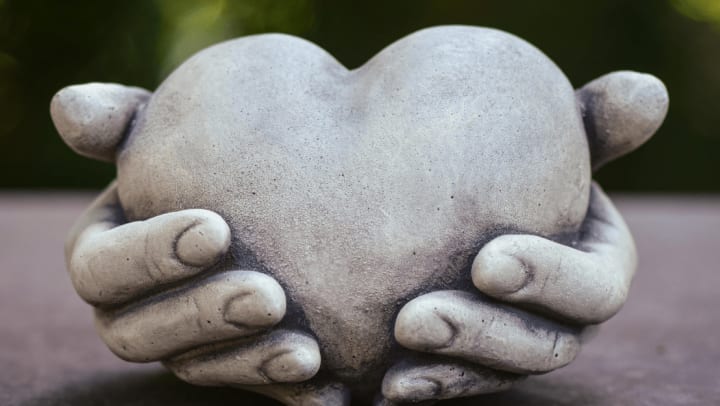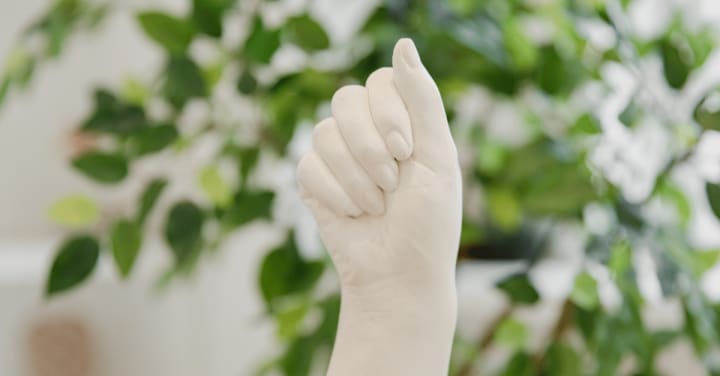Legacy stands as a cornerstone for seniors walking their final chapters, particularly those receiving dementia care in South Tulsa, OK. True legacy reaches far beyond collected possessions—it creates lasting connections that outlive physical presence and touch future generations. Seniors facing cognitive challenges often feel an increasing need to leave meaningful imprints as they process their mortality and life's purpose.
Hand molds offer a particularly touching way to preserve physical connections you hold dear. These aren't merely decorative objects—research reveals that true legacy combines meaningful experiences and relationships.
Your loved one's molded handprints become symbolic artwork, providing emotional anchor points throughout the grieving process.
The legacy you craft through these tangible remembrances communicates profound meaning, especially when verbal communication becomes difficult. The gift of tangible memories for loved ones facing dementia might be the most meaningful legacy you leave your family. Places like Iris Memory Care embrace this principle through their intimate setting.
Legacy as a Reflection of Life Lived
For older adults, legacy mirrors their journey, values and contributions. Hand molds offer especially powerful symbols—these impressions capture unique lines, curves and the essence of hands that comforted, worked and loved throughout decades.
Legacy helps seniors shape how they wish to be remembered. The thoughtful creation of memory objects lets them actively participate in crafting their own narrative. These physical items become story vessels, building meaningful bridges between generations.
Emotional and psychological benefits for families
Creating legacy items brings deep psychological benefits to both seniors and their loved ones:
-
Enhanced emotional well-being: Legacy-building activities help seniors process life experiences, improving emotional health
-
Reduced stress: Documenting one's life serves as a therapeutic exercise that eases anxiety
-
Strengthened cognitive function: Creating memory keepsakes stimulates cognitive processes, potentially slowing the decline
Most precious of all, legacy work builds genuine connections. Family members who create handprint molds with senior loved ones share meaningful moments that strengthen bonds across generations.
Creating Hand Molds: A Step-by-Step Guide
Hand molds preserve the unique contours and textures that tell your loved one's life story—from age spots to fingerprints. This guide will help you create beautiful hand molds that preserve physical connections, offering comfort long after your loved one has passed.
1. Materials you'll need
Gather these essential supplies before beginning:
-
Alginate powder (dental grade captures the finest details)
-
Casting material (plaster, stone or gypsum)
-
Mixing containers (buckets or plastic bottles)
-
Mixing tools (stick or electric mixer)
-
Warm water (90-100°F for comfort)
-
Scissors or knife (for demolding)
-
Optional: petroleum jelly, decorative paint
2. Preparing the hands and mold
Help your loved one feel comfortable first—they'll need to hold still for several minutes. Choose a time when seniors with dementia typically feel calm. Measure the alginate powder and water following the package instructions, usually three parts water to 1 part alginate by weight.
Mix quickly but thoroughly for about 45-60 seconds. Have your loved one place their hand in the mixture while you gently support their wrist. This gentle guidance helps them maintain position while preventing air bubbles between fingers.
3. Pouring and setting the cast
After the alginate sets (about 3-5 minutes), help your loved one remove their hand by gently wiggling fingers. Mix your casting material—typically a 1:3 water-to-powder ratio for plaster. Pour slowly into the mold, tapping the sides to release trapped air.
Place a bolt or fastener in the wrist area before hardening for added stability. Allow 20-30 minutes for proper setting.
4. Finishing and decorating the mold
After the cast sets, carefully cut away the alginate mold. Let the cast dry completely for 24 hours before adding paint or decorations. Small air bubbles can be filled with white glue or touch-up plaster for a smoother finish.
This meaningful keepsake creation offers therapeutic benefits beyond the finished product. Hand molds provide comfort to both seniors and families, preserving legacy in a form that speaks to the heart when words no longer can.
Legacy That Lasts: The Gift of Memories
Hand molds capture something beyond what words express—the unique lines telling a life story, the strength that held a family together and the warmth that soothed loved ones.
These physical impressions serve as powerful connection points when cognitive abilities change and after your loved one has passed. Consider these practical ways to create beautiful molded handprints:
-
Select morning hours when your loved one feels most alert and comfortable
-
Create a warm atmosphere with favorite music playing softly nearby
-
Capture photos during the process to document this special moment
-
Include multiple generations to strengthen family bonds
Legacy projects bring therapeutic benefits to everyone involved. Family members often discover a renewed sense of purpose and connection during these activities, while seniors feel deep validation that their lives and stories truly matter.
Take time to craft these lasting legacies together before saying goodbye. If you need guidance with memory care, call (918) 940-1800. Schedule a tour at Iris Memory Care of Tulsa to see how specialized environments enhance these tangible remembrances while providing exceptional care.
FAQs
Q1. What are some meaningful ways to create a legacy for seniors?
There are several meaningful ways to create a legacy, including hand molds, memory boxes with personal items, audio recordings of stories, photo albums and legacy letters. These tangible remembrances help preserve memories and provide comfort to families.
Q2. What materials are needed to make a hand mold?
To create a hand mold, you'll need alginate powder, casting material (like plaster or gypsum), mixing containers, mixing tools, warm water and scissors or a knife for demolding. Optional materials include petroleum jelly and decorative paint.
Q3. How can family members be involved in legacy-creating activities?
Family members, including grandchildren, can assist with tasks like mixing materials for hand molds, decorating finished molds or taking photographs. They can also participate in storytelling sessions, help create memory boxes or collaborate on writing legacy letters.


